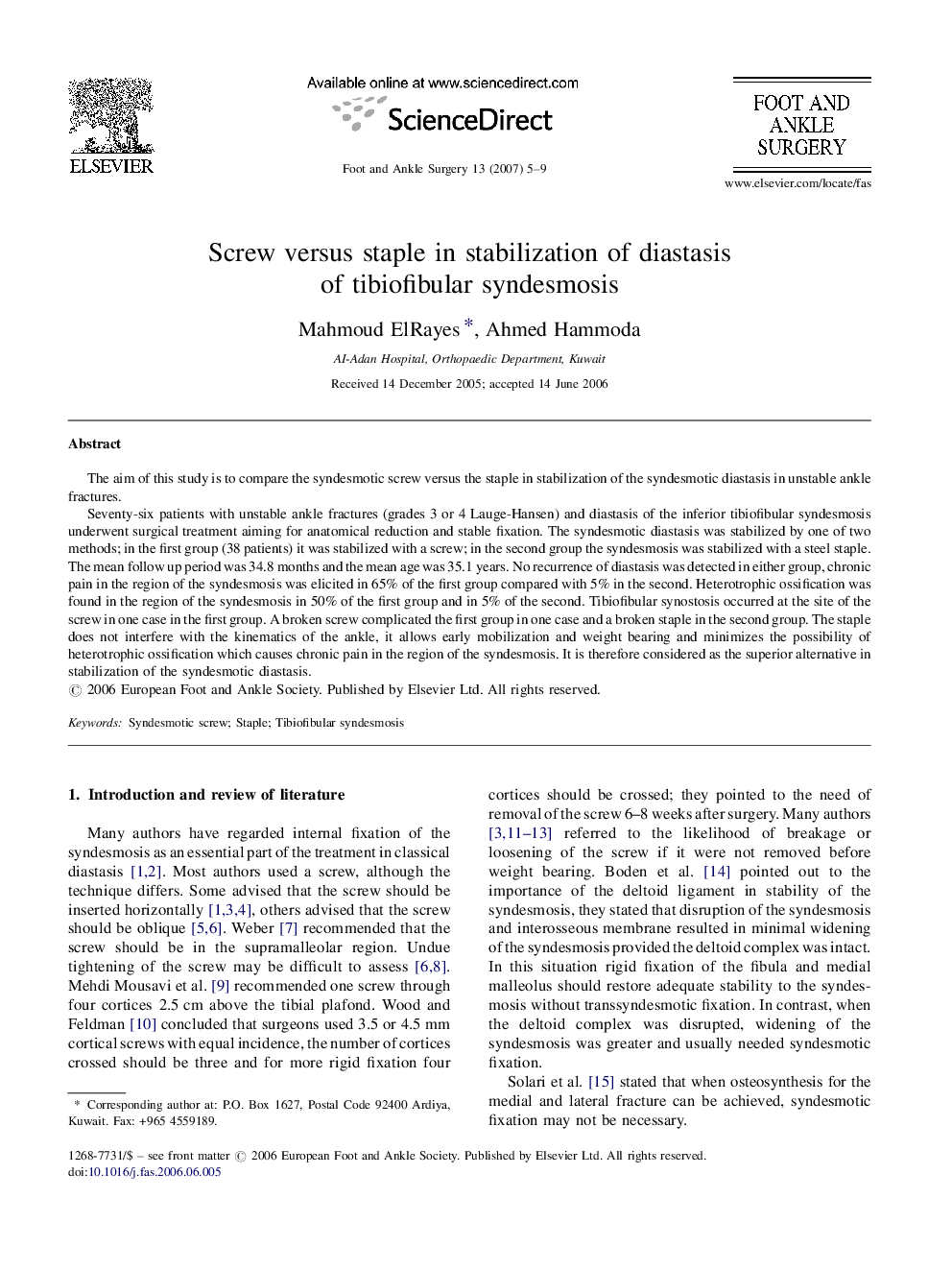| Article ID | Journal | Published Year | Pages | File Type |
|---|---|---|---|---|
| 4055179 | Foot and Ankle Surgery | 2007 | 5 Pages |
The aim of this study is to compare the syndesmotic screw versus the staple in stabilization of the syndesmotic diastasis in unstable ankle fractures.Seventy-six patients with unstable ankle fractures (grades 3 or 4 Lauge-Hansen) and diastasis of the inferior tibiofibular syndesmosis underwent surgical treatment aiming for anatomical reduction and stable fixation. The syndesmotic diastasis was stabilized by one of two methods; in the first group (38 patients) it was stabilized with a screw; in the second group the syndesmosis was stabilized with a steel staple. The mean follow up period was 34.8 months and the mean age was 35.1 years. No recurrence of diastasis was detected in either group, chronic pain in the region of the syndesmosis was elicited in 65% of the first group compared with 5% in the second. Heterotrophic ossification was found in the region of the syndesmosis in 50% of the first group and in 5% of the second. Tibiofibular synostosis occurred at the site of the screw in one case in the first group. A broken screw complicated the first group in one case and a broken staple in the second group. The staple does not interfere with the kinematics of the ankle, it allows early mobilization and weight bearing and minimizes the possibility of heterotrophic ossification which causes chronic pain in the region of the syndesmosis. It is therefore considered as the superior alternative in stabilization of the syndesmotic diastasis.
